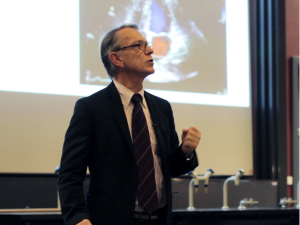Vegetarians and vegans, do they get enough selenium in their diets? It is an important question because the number of vegetarians around the world is growing for ethical and environmental reasons. How do we measure selenium status in various groups of people?

Selenium is an essential trace element. Essential means that we have to get it from our food or from supplements. The human body does not synthesize selenium. What the body does synthesize is the selenoproteins, of which selenium in the amino acid selenocysteine is a key active component.
Particularly in much of Europe and the Middle East, the soil and the plants have relatively poor selenium content. In many countries, the farm animals are supplemented with selenium to improve their nutritional intakes and their health and to avoid selenium deficiency syndromes.

